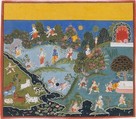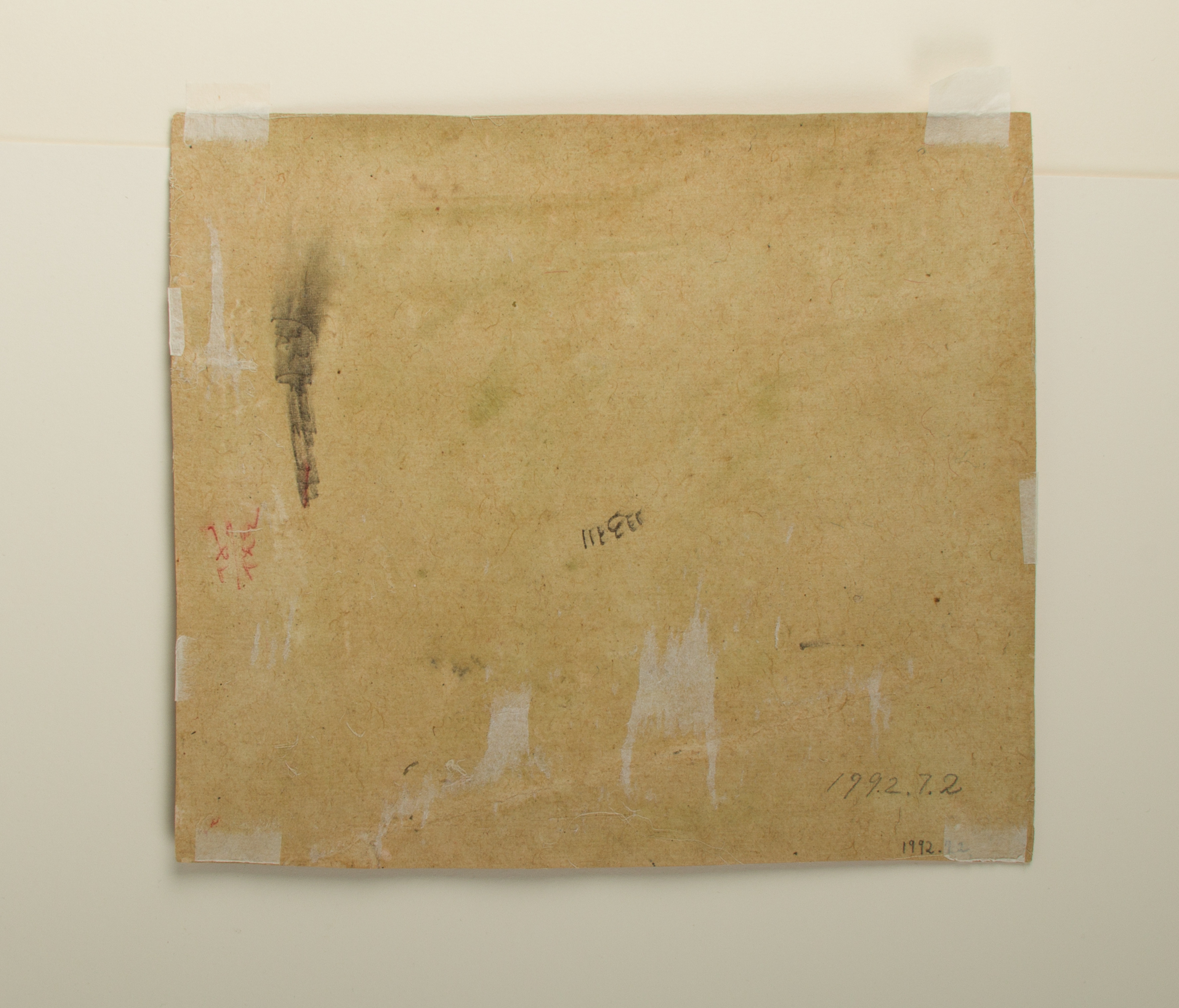Blindman's Bluff: Page From a Dispersed Bhagavata Purana (Ancient Stories of Lord Vishnu)
Not on view
During the eighteenth century, artists continued to use the bright colors, flat shapes, frontal compositions, and stylizations typical of seventeenth-century Mewari painting- but only in illustrations of religious and literary texts, possibly because the old style was considered well suited to the mythological realm. As is apparent from this picture of Krishna's childhood games, the one innovation that was introduced into such manuscript paintings in the eighteenth century was the sporadic evocation of a deeper, more tangible space. The individual objects still appear two-dimensional here, but they are freed from the ground plane and arranged against a high horizon in a manner that suggests spatial recession. Although the implied depth is reinforced by overlapping trees, the diagonal slant of the river, and flat planes of color, the use of profiles and the fairly rigid frontality do not let viewers forget that they are looking at a two-dimensional, decorated surface.
Due to rights restrictions, this image cannot be enlarged, viewed at full screen, or downloaded.
This artwork is meant to be viewed from right to left. Scroll left to view more.



